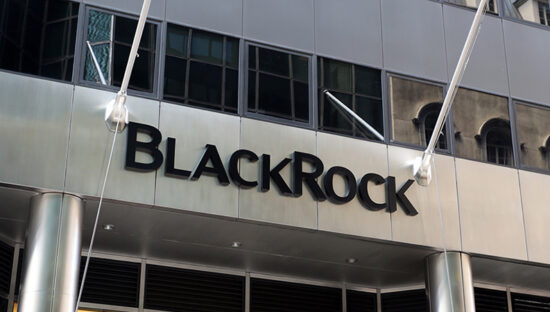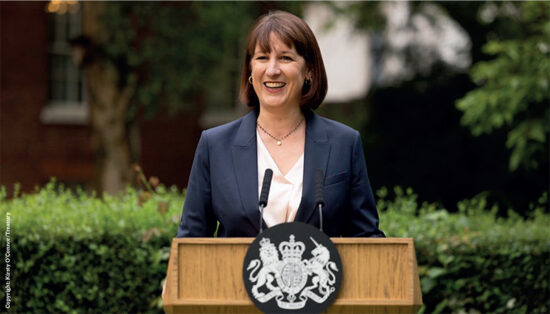Many financial advisers view the inheritance tax regime for discretionary trusts as complex and to be avoided. But the reality is that such trusts are now commonplace in inheritance tax planning and an understanding of the inheritance tax regime for these trusts will greatly assist with client advice.
There are three occasions when an inheritance tax charge can arise for a discretionary trust:
- On creation of the trust (the entry/initial charge).
- On every ten-year anniversary (the principal or periodic charge).
- When capital exits the trust (the exit charge).
The entry charge is usually well understood. It arises as a result of the settlor creating a discretionary trust and passing assets to trustees. Such transfers are chargeable lifetime transfers and if the value of assets passed over exceeds the available inheritance tax annual exemption and nil-rate band, the 20% lifetime rate of inheritance tax is charged. The exit charge is not so straightforward, but the sole purpose of this article is to examine the calculations for the ten-year anniversary charge.
The ten-year charge
The ten-year or principal charge is the main inheritance tax charge for discretionary trusts, and understanding how it is applied and calculated is of real value to advisers. Most life offices provide discretionary trust versions of their discounted gift, loan and gift trusts, and their underlying investments are invariably single-premium investment bonds.
Such a charge is usually paid by a withdrawal from the underlying trust asset – the investment bond. Anticipating this charge allows the withdrawal to be made in the most effective way, since a withdrawal can trigger a chargeable event in relation to the bond and result in a 50% income tax charge on the settlor or the trustees.
The legislation that governs how to calculate ten-year and exit charges is contained in sections 58 to 85 of the Inheritance Tax Act 1984. The HMRC inheritance tax manual IHTM 42000 on discretionary trusts (also known as relevant property settlements) sets out how to calculate ten-year charges.
The sections of the 1984 Act which apply to a simple case are themselves simple, but it becomes much more complex if the trust is complex. This article therefore concentrates on a simple case and as a result assumes the only investment held is a single-premium investment bond.
The approach adopted in HMRC’s inheritance tax manual in calculating ten-year anniversary charges is also mirrored for ease of reference.
Charge calculation
We will start our examination of how to calculate a ten-year charge by considering the terms in use.
Anniversary date
The date on which a ten-year charge on a discretionary trust is imposed is determined by the date the discretionary trust commenced. For our simple case it commenced when the trustees either received the cash to apply for the investment bond or in the case of an existing investment bond when it is assigned into trust. The ten-year charge arises on the tenth anniversary of the date the discretionary trust began and subsequent ten-year anniversaries.
Relevant property
‘Relevant property’ means settled property in which no qualifying interest in possession subsists – in other words, property held in discretionary trusts. The ten-year charge is applied to the value of all relevant property held in the discretionary trust immediately before the tenth anniversary.
For our simple case this is the value of the investment bond at the date of the ten-year anniversary. However, for discounted gift trusts the value of the settlor’s retained rights – and for loan trusts the value of the outstanding loan – needs to be deducted from the value of the relevant property.
Assumed chargeable transfer
In HMRC’s inheritance tax manual, the value of the assumed chargeable transfer needs to be ascertained. This includes the current value of the relevant property at the ten-year anniversary. For our simple case the relevant property will comprise only the value of the investment bond at the date of the ten-year anniversary.
The historic value of any related settlements also form part of the assumed chargeable transfer. Settlements are related if the settlor is the same and they commence on the same day.
In practice, related settlements are avoided by using the Rysaffe principle (Rysaffe Trustee Co (CI) vs IRC 2003) and creating a number of separate trusts on different days. This principle also helps to reduce the impact of both the ten-year and exit charges by giving each trust its own separate nil-rate inheritance tax band.
The historic value of non-relevant property (such as part of the trust being a qualifying interest in possession) would also form part of the assumed chargeable transfer but this is very rare, so for the purposes of this article we will not consider this further.
Previous cumulative transfers
We then need to ascertain the value of the previous cumulative transfers, which use up the available nil-rate band, which is currently £325,000. The previous cumulative transfers consist of two elements:
- The settlor’s personal cumulative total of chargeable lifetime transfers in the period of seven years prior to the date of the discretionary trust.
- The amounts assessed for the exit charge during the ten-year period prior to the ten-year anniversary.
Note that the settlor’s personal cumulative total does not fall out of cumulation and is always included in the calculation of every ten-year anniversary charge.
The settlor should not add to an existing discretionary trust unless it is by an exempt transfer. This is because the settlor’s personal cumulative total before the commencement of the discretionary trust could be replaced, if this is greater, by the settlor’s personal cumulative total before the addition.
Aggregate chargeable transfer
In HMRC’s inheritance tax manual, adding the assumed chargeable transfer and the previous cumulative transfers together arrives at the aggregate chargeable transfer.
For our simple case, we will need to add together the value of the relevant property (that is the value of the investment bond at the ten-year anniversary), the settlor’s personal cumulative total of chargeable lifetime transfers in the seven years prior to the date of the discretionary trust, and the cumulative exit charges during the ten-year period prior to the ten-year anniversary.
Tax charge calculation
For the purposes of the ten-year charge, the discretionary trust is deemed to make a notional transfer immediately before the ten-year anniversary of the value of the assumed chargeable transfer.
Following the HMRC inheritance tax manual, the notional tax on the aggregate chargeable transfer is then calculated, deducting the nil-rate band at the date of the ten-year anniversary and then multiplying by the lifetime rate of tax (20%). Notional tax on the previous cumulative transfers (if any) is then calculated, again deducting the nil-rate band and multiplying by the lifetime rate.
The notional tax calculated for the previous cumulative transfers is then deducted from the notional tax calculated for the aggregate chargeable transfer, to give the total tax chargeable at the lifetime rate. The ten-year anniversary tax rate can then be calculated using the following formula:
- C tax/ACT x 100 x 3/10 = settlement rate percentage where C tax is the total tax chargeable at the lifetime rate and ACT is the value of the assumed chargeable transfer.
If any of the property has not been in the discretionary trust for the full ten years, relief is allowed for the number of complete quarters that the property was not relevant property.
The tax rate for the ten-year charge is 3/10ths of the rate, which would be charged on an immediately chargeable lifetime transfer. The ten-year charge’s maximum rate is therefore 6% (3/10 x 20 or 30% x 20%).
The value of the relevant property (the investment bond) is then multiplied by the settlement rate percentage to get the inheritance tax payable by the trustees for the ten-year charge.
Example of a ten-year charge
John created a discretionary trust for his grandchildren within his available nil-rate band. His personal cumulative total of chargeable lifetime transfers in the seven years prior to the date of this discretionary trust was £100,000.
The trustees invested the cash in a single-premium investment bond. During the past ten years there have been exit charges of £25,000.
The value of the bond at the ten-year anniversary is £500,000. There are no related settlements or additions to the trust. The current nil-rate band is £325,000.
Using HMRC’s approach to calculating the ten-year charge there are effectively four steps, as shown in the table (below).
Example charge calculation
| Step 1: aggregate chargeable transfer calculation Assumed chargeable transfer: £500,000 (relevant property value) Plus previous cumulative transfers: £125,000 (settlor’s cumulative total and exit charges) Aggregate chargeable transfer: £625,000 |
| Step 2: notional tax calculation Aggregate chargeable transfer: £625,000 – £325,000 x 20% = £60,000 Previous cumulative transfers: £125,000 – £325,000 x 20% = (£0) Total tax chargeable at the lifetime rate: £60,000 |
| Step 3: settlement rate percentage calculation Total tax chargeable at lifetime rate divided by assumed chargeable transfer and the formula then applied to the result: £60,000/£500,000 x 100 x 3/10 = 3.6% |
| Step 4: Inheritance tax payable by the trustees Value of relevant property multiplied by settlement rate percentage: £500,000 x 3.6% = £18,000 |








